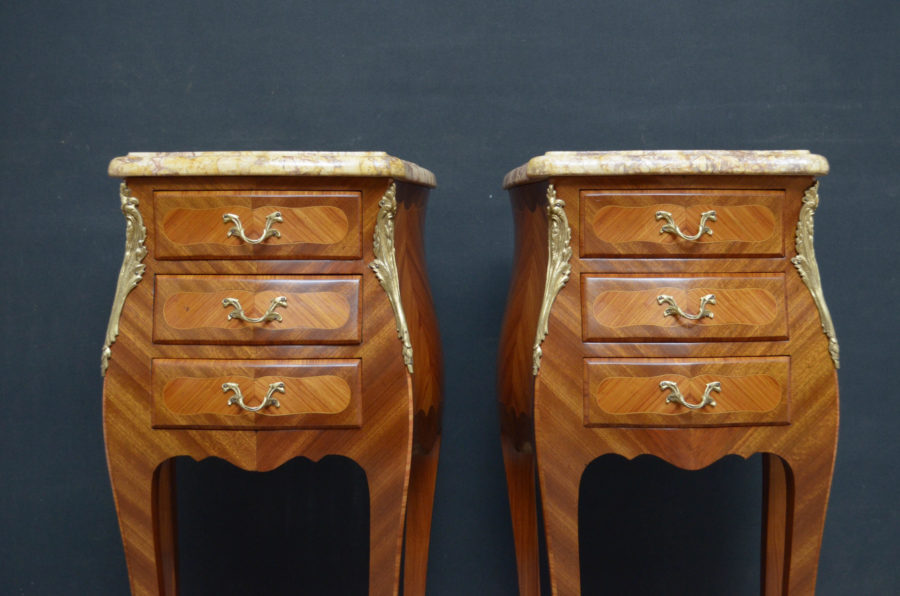
In the world of Antique furniture and other collectable items, an ‘Antique’ is generally considered to be an item that is at least one hundred years old. Anything less than that, but still old, is generally classified as ‘Vintage’.
The exception being for cars, which are considered ‘antique’ after 25 years.
However age alone isn’t enough. An antique should also display some sort of artistic and historical merit, and/or craftsmanship.
A unique selection of antique furniture for sale.
Antique’s obtain value sometimes for a complex set of reasons. From scarcity, sentimental value, their place within the canon of design history, and their place within our wider history.
The condition of the piece, information about its provenance, and a wide set of quite subtle factors, such as the fashion of the day, all affect the perception of a piece, its subsequent value; and whether it is considered an ‘antique’ or simply ‘old’.
All of these factors go into making an antique, an antique, not just age.
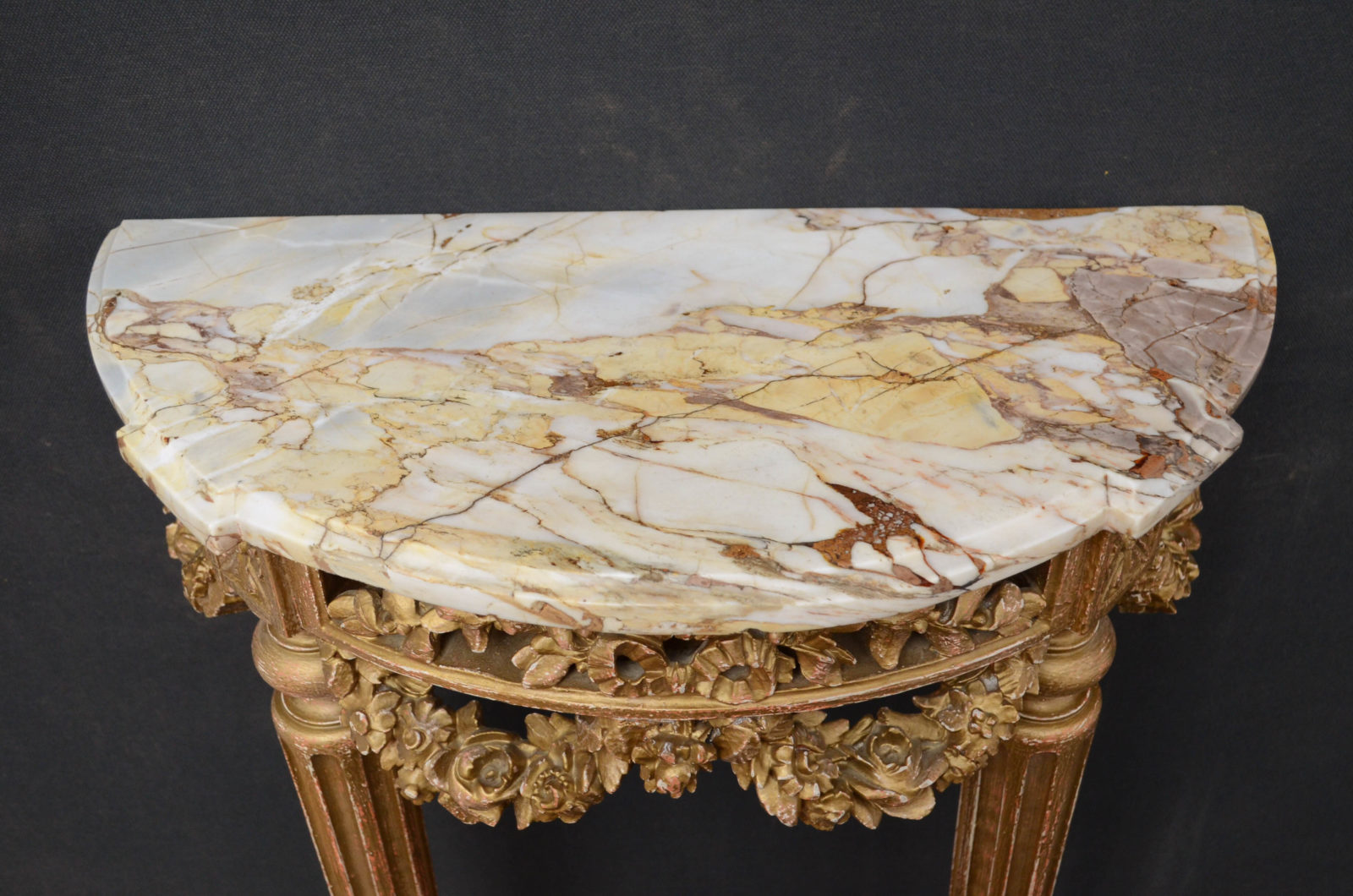
Some items simply aren’t old enough.
This 100 year rule can be quite loosely applied. Some outlets have been known to label anything over 50 years as an antique, whereas other, generally higher end, establishments have a minimum 150 year policy. And some antique’s fairs will admit a large number of vintage dealers.
However once you scrape the surface of this fascinating world, you begin to realise that more highly valued items of older furniture, can be viewed more in light of the arts and design movements that they represent.
And there are a wide range of more modern design movements that are of high artist merit, and sit well alongside older antique furniture. So this antiques and vintage crossover is no bad thing per se, depending what you aim to achieve in designing your interiors.
That said, do be sure to carefully check the age and provenance of anything labelled antique.
When too many parts have been replaced.
Interestingly, the US treasury, considers an antique to no longer be an antique once 50% or more of its parts have been replaced or restored. Therefore it is subject to duty. Antiques, ie items of over 100 years in age, are tax exempt in the US.
You need to look at the story of a restored piece carefully before making a judgement call. Restoration is obviously an important part of caring for antiques. The quality of restoration can impact greatly on the value of a piece of antique furniture, as can the condition.
Very old antiques will have mostly undergone some form of care or restoration. But look out for signs of whole sections being replaced, such as unexplainable fading/colouration on certain parts of the wood.
The use of different woods can actually be a sign that the piece is genuine though, as it was very common to use cheaper woods, such as oak to line a piece. Then to use more exotic woods, such as mahogany in the outer, visible sections.
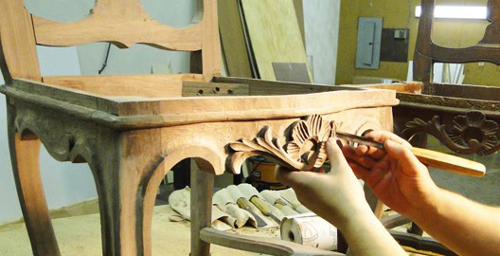
When its a replica
There are many fine replicas. Some have great merit in their own right. For example, there are master craftsman still producing work from Chippendale et al’s blueprints today.
Many of which fetch a great price, but should not be confused with original antiques. Indeed the makers of fine replicas are proud of their work, which is sold as such.
Original Chippendale is extremely valuable and carefully catalogued. But non the less, buying reproduction is a risk when attempting to buy original antique furniture.
Buying from a reputable dealership or auction house should help to prevent this. But there are measures that you can take for yourself too. Below we give a number of handy tips for spotting tell tale signs.
First, it is worth mentioning that around the turn of the 20th century, there was a great fashion for producing very high quality revival furniture, reproducing the Georgian and Regency elegance primarily, of bygone years.
These revival pieces have become highly value pieces in their own right, and have a wonderful style all of their own. However they should never been confused with rarer Georgian antique furniture.
A reputable dealer would never attempt to sell Revival antiques as Georgian, but it is handy to know about this period in furniture design.
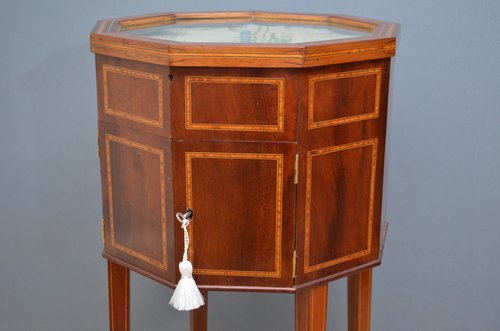
Authenticity is always best established by considering a range of factors:
The Wood
The type of wood is a good indication of the age of a piece, although certain woods have wained and revived in popularity, our guide to wood is extremely helpful. Nimbus Antique Wood Guide
The condition of the wood can also be a tell tale sign, some light movement/warping of the wood should be expected with genuine antique furniture.
Wood will have darkened over time, As it then warps and moves, lighter sections will be exposed, another subtle sign of genuine antique furniture.
The Finish
The finish is one good indicator of authenticity, and can help to date a piece. Although a piece may have been restored and refinished.
A finish can be tested, but this isn’t possible in a showroom or auction house. Varnish and lacquer weren’t developed until middle Victorian times. Before that, finer pieces would have been French polished, or finished with shellac. Very old pieces may have been finished in milk paint, wax or oil.
The Joinery
As with lacquers, machine cut furniture wasn’t produced until around the 1860’s. Subsequently there will be fewer dovetails at the joints of handmade, pre-mid Victorian pieces; which should also be a little rougher. Any nails used should be square if the piece is dated prior to 1900.
Signs of Hand Working and Asymmetry
On examining the underside and back of the piece, there may be nicks, cuts and uneven sections of wood, basically signs that hand tools were employed in the making.
Machine cut wood and parts will be more symmetrical. In genuine antiques dated before the mid 19th century, there should be a little asymmetry on careful examination, proving that they are made by the hand of a craftsman, not a machine.
Research Design Periods and Movements
The more you learn about the different eras and trends in furniture design and why these trends came about, the more you will understand and fall in love with the world of antique furniture. You will also be better positioned to make the right choices.
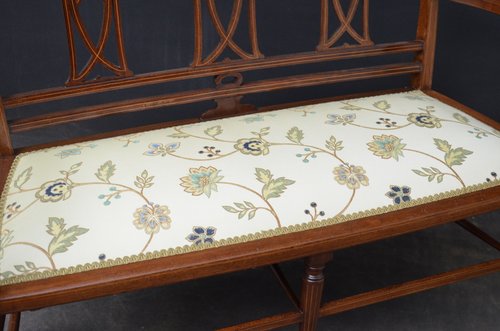
Upholstery
Where an antique contain upholstery, there is quite a few things to consider. Many older pieces will be reupholstered. Where they aren’t they will represent a substantial investment most likely. So you might want to consider why you are making your purchase.
If it is for everyday use, then a re-upholstery, later Victorian, or revival item might serve your needs better, as very old fabrics need to be treated as historical artefacts; and aren’t really for ever day use. They should be protected from damp or direct sun light; which might cause uneven fading, etc.
Upholstery can also be a tell tale sign of authenticity. If for example the under frame of a chair shows signs of old upholstery pins or fading in the wrong places, then it cant be the original fabric.
Likewise, you might expect an older item to have been re upholstered at some point. if not the fabric is likely to be quite faded.
Documentation
One of the best indicators of authenticity is when a piece comes with original documentation. However this can also increase the price and value of the piece.
A unique selection of antique furniture for sale.
| Cookie | Duration | Description |
|---|---|---|
| cookielawinfo-checbox-analytics | 11 months | This cookie is set by GDPR Cookie Consent plugin. The cookie is used to store the user consent for the cookies in the category "Analytics". |
| cookielawinfo-checbox-functional | 11 months | The cookie is set by GDPR cookie consent to record the user consent for the cookies in the category "Functional". |
| cookielawinfo-checbox-others | 11 months | This cookie is set by GDPR Cookie Consent plugin. The cookie is used to store the user consent for the cookies in the category "Other. |
| cookielawinfo-checkbox-necessary | 11 months | This cookie is set by GDPR Cookie Consent plugin. The cookies is used to store the user consent for the cookies in the category "Necessary". |
| cookielawinfo-checkbox-performance | 11 months | This cookie is set by GDPR Cookie Consent plugin. The cookie is used to store the user consent for the cookies in the category "Performance". |
| viewed_cookie_policy | 11 months | The cookie is set by the GDPR Cookie Consent plugin and is used to store whether or not user has consented to the use of cookies. It does not store any personal data. |